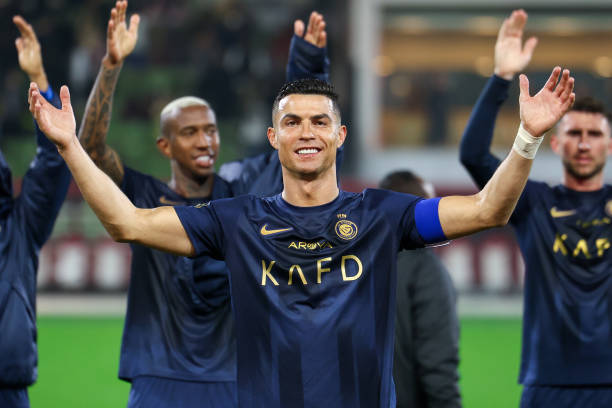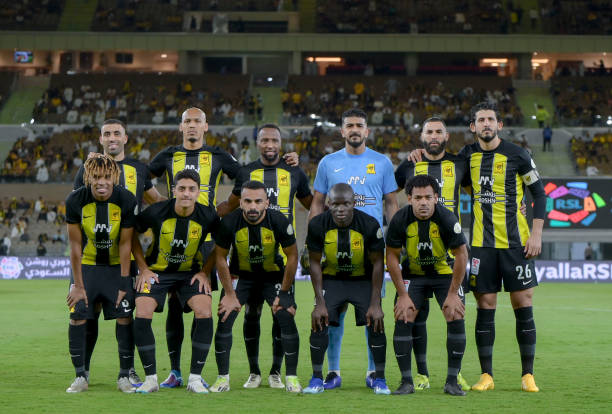
If you’re a U.S. soccer fan, chances are you’ve noticed a new trend: some of the biggest names in world football are heading to Saudi Arabia. Cristiano Ronaldo. Neymar. Karim Benzema. The Saudi Pro League is no longer a distant curiosity — it’s making headlines, shifting transfer strategies, and changing the global football narrative.
This guide breaks down why so many elite players are joining the Saudi League, the financial and political forces behind the movement, and what it means for the future of global soccer — including how it compares to MLS.
What Is the Saudi Pro League?
Founded in 1976, the Saudi Pro League (SPL) is the top division of professional football in Saudi Arabia. As of 2025, the league consists of 18 teams competing annually, with promotion and relegation from the lower division (First Division League).
Format Overview:
- Season: August to May
- Teams: 18
- Championship and relegation system
- Top clubs: Al-Hilal, Al-Nassr, Al-Ittihad, Al-Ahli
For American readers, think of the SPL as comparable to MLS in structure — a domestic league looking to elevate its international reputation through major signings and long-term investment.
Why Big Stars Are Moving There
1. Financial Incentives
At the heart of the Saudi League’s rise is one key factor: money. The salaries offered to global stars are among the highest in football history.
- Cristiano Ronaldo reportedly earns over $200 million per year at Al-Nassr, including image rights and commercial deals.
- Neymar, after leaving PSG, signed with Al-Hilal on a contract rumored to exceed $150 million per season.
- Benzema joined Al-Ittihad after winning the Ballon d’Or, in a deal surpassing $100 million.
These packages dwarf those offered by most European or MLS clubs, creating an undeniable pull — especially for players at the peak or twilight of their careers.
According to CBS Sports’ report on Saudi football’s expansion, Saudi clubs collectively spent over $900 million on player acquisitions in 2023 alone.
2. State-Backed Strategy: Vision 2030
Saudi Arabia’s government isn’t just throwing money around — it’s part of a broader strategy.
Vision 2030 is the kingdom’s economic diversification plan, aimed at reducing dependence on oil and investing in sectors like tourism, entertainment, and sports. Football is a key pillar of this strategy, positioned as a tool of soft power to raise the country’s global profile.
The Public Investment Fund (PIF), which controls over $700 billion in assets, now owns or invests in several major clubs in the league — giving them access to deep financial resources.
3. Ambitious Clubs and Upgraded Infrastructure
Saudi clubs are modernizing rapidly:
- New training facilities
- Renovated stadiums
- Partnerships with top European clubs for knowledge exchange
- Professional management and marketing teams
These investments make the league more appealing not just financially, but also in terms of career legacy and lifestyle.

What It Means for World Football
A Shift in Transfer Market Power
European clubs are being forced to rethink their transfer strategies. The Saudi League’s financial muscle inflates player prices and disrupts negotiation dynamics.
For example, Liverpool declined a $100 million offer for Mohamed Salah, but the fact that Saudi clubs can even bid at that level is unprecedented.
Saudi Arabia’s Global Positioning
Saudi Arabia is positioning itself as a central hub in the sports world — not just in football, but also golf (via LIV Golf), boxing, and Formula 1.
This redefines the traditional East-West football axis, where Europe used to be the undisputed destination for top talent. Now, a new global player is emerging.
Comparison to MLS Strategy
While the MLS also signs global stars (Beckham, Zlatan, Messi), its model is different:
- Focused on long-term growth and domestic talent
- League-wide salary cap and ownership model
- Smaller budget compared to Saudi clubs
Yet both leagues share a core idea: leverage star power to grow the game.
According to ESPN’s coverage of Messi’s MLS debut, the Argentine’s arrival increased Apple TV MLS subscriptions by over 100%.
Interested in supporting the growing Saudi League? You can now find official gear and accessories online:
- Official Al-Nassr jersey featuring Cristiano Ronaldo
- Al-Hilal home and away kits
- Nike Mercurial boots — worn by Ronaldo
- Saudi club lifestyle tracksuits and scarves
Trusted Sources
- ESPN: Saudi Arabia’s football spending explained
- CBS Sports: Ronaldo’s Al-Nassr contract breakdown
- Official Saudi Pro League website
Rivalries, Attendance & Misconceptions
League Attendance Is Rising
While early criticism labeled the Saudi League a “ghost league,” attendances have steadily climbed, especially for high-profile fixtures.
- Al-Hilal vs Al-Nassr (the “Riyadh Derby”) draws over 50,000 fans
- Clubs now invest in fan engagement and stadium experiences
Breaking the “Retirement League” Label
While some stars are indeed past their prime, others like Rúben Neves and Malcom joined in their 20s — suggesting a competitive, forward-looking project.
The Saudi Pro League is no longer a side story in the football world — it’s becoming a central narrative. With its combination of financial power, national ambition, and aggressive recruitment, it’s changing how the global game is played.
For U.S. fans, understanding the Saudi League isn’t just about following Ronaldo’s next chapter — it’s about recognizing a broader shift in football’s power map.
Want to explore more? Check out our guides on:
FAQ
Why are so many famous soccer players joining the Saudi League?
Because of record-breaking salaries, government backing through Vision 2030, and club ambitions supported by the Saudi Public Investment Fund.
Is the Saudi Pro League better than MLS?
It depends on your criteria. The SPL currently has more global stars, but MLS offers a more structured, developmental model focused on long-term league growth.
How much do players earn in the Saudi League?
Top players can earn between $50 million and $200 million per season, including bonuses and endorsements.
Can Saudi clubs compete in the Champions League or Club World Cup? They can’t enter UEFA competitions, but they do qualify for the AFC Champions League and will be featured in the FIFA Club World Cup hosted by Saudi Arabia in 2025.
Where can I watch Saudi League matches in the US? Broadcast rights vary, but streaming platforms like Shahid and international deals are being expanded. Check the official SPL site for updates.